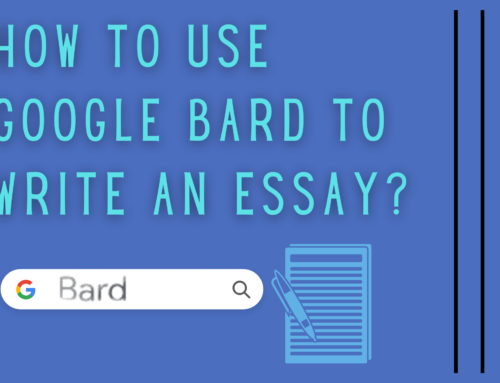What is Vision Statement?
Future-oriented and inspiring, the vision statement serves as a motivator.
It frequently refers to not only the company’s future, but also the future of the sector of the economy or of society where change is sought by the organisation.
It outlines where you picture yourself in a few years.
It motivates you to give your all.
Your understanding of why you are employed here is shaped by it.
High aspirational vision statements are often used to direct decision-making, unite and motivate personnel, and even inspire customers.
In order to help direct company strategy, vision statements—which are future-focused—are frequently combined with mission statements, which are present-focused, and value statements, which emphasise the behaviours that a firm promotes in order to achieve its objectives.
Why is it important?
A vision statement is more than a writing exercise.
It clarifies the primary reason for a company’s existence and increases the significance of the work. One of the key goals of a vision statement is to assist an organisation attract and retain enthusiastic, like-minded personnel.
Companies can more easily work to strengthen the culture by creating an acceptable organisational vision culture and a vision statement.
A business vision statement provides everyone with clarity regarding the broad picture, which creates the conditions for better decision-making and customer targeting.
Why is it important to the company goals?
Every firm, regardless of size or sector, needs to develop a vision statement.
Why?
Most importantly, it offers workers a feeling of direction.
Doing meaningful work is one of the main factors influencing employee satisfaction; with a clear vision statement, employees can unite behind a common objective that motivates them every day.
A strong vision statement should inspire and drive your team members to work hard for your company and the advancements you will all accomplish in the near future.
Additionally, it can act as a benchmark for decision-making at all levels, from the executive board to specific workers.
Establishing a “limiter” that allows us to eliminate opportunities and strategic initiatives that aren’t in line with long term corporate objectives will help us make better decisions.
Give a brief explanation of what our company is attempting to accomplish so that other parties, like investors or the media, can better understand us.
How to write a Vision statement ?
The strategic vision planning process includes writing a vision statement.
It necessitates preparation, thinking, and time.
Boards of directors should give the crafting of their vision statements enough time because it’s an essential step in developing a company.
A written declaration that outlines the direction a company is taking and the final product is known as a vision statement. The length of a vision statement might vary. The scope of the company can be inferred from how long the vision statement is. A company’s mission statement, goals, and aspirations are all outlined in a vision statement.
Select a small group of people who embody the principles and standards of your company and who also represent a range of experience and knowledge.
Then, use the following steps to succinctly and clearly express your vision.
1. Consider the next five to ten years
Imagine a future in which your company is either a market leader or successfully competes in that market.
A gap analysis may be helpful in developing these projections.
Comparing present performance to desired performance, or “gap analysis,” enables you to see the discrepancy between reality and the aim.
The ultimate result helps you to better understand where your company is having trouble and where there is possibility for expansion.
Start by being very clear about the real work that your organisation undertakes.
Keep in mind that you should be outcome-focused rather than output-focused.
You will get a long way toward developing your vision statement by doing this, but it is not sufficient on its own.
2. Describe the special twist your organisation brings to the aforementioned result
Nowadays, very few goods or services are actually new; instead, the majority are more like reimaginings of things that already exist but have been given a new focus, strategy, or presentation. Someone will have thought, at some point throughout the existence of your organisation, that there was some reason why THIS organisation would succeed when others had failed. You must specify what that something is.
3. Describe your vision in writing
The previous phases should have revealed concepts and objectives that are significant to your company; use this knowledge to create your vision statement.
You’ll have a more condensed “word bank” of your most crucial terms, concepts, and responses to fundamental business queries.
The next stage is to arrange these concepts into sentences that make sense and are arranged in accordance with the priorities of your business.
For the time being, don’t worry about length; instead, concentrate on explaining your vision in a way that makes sense, covers all the important topics you want to cover, and resonates with your stakeholders and audience.
Editing a lengthy, thorough statement is far simpler than trying to add information to a statement that is incomplete.
4. Determine the key players
Make a list of your co-founders, fellow executives, and high-level employees who can assist you in developing and refining your vision statement so that it speaks for your company as a whole. Obtaining support from firm executives is also a wise strategic decision; the more strongly they subscribe to the vision statement, the better they will embody it in their day-to day work and convey it to their respective teams and departments.
Your vision statement may not feel as relatable to staff or encourage possible investors if you’re solely thinking about your customers. Verify your draughts against this list to ensure that all of your important stakeholders will find them to be appropriate.
5. Step back and consider
Take a step back and read your vision paragraph from a distance before you go through the labour of shrinking it.
Another instance where you would benefit from putting it aside for a few days so you can look at it again later would be this one. To determine whether your vision statement meets all the criteria for a good vision, ask yourself the following questions:
Are You Sure?
- Is it ambitious but not insurmountably so?
- Does it Stimulate You?
- Is it Concise and Abstract Enough?
- Duration: Is it restricted to a certain time period?
Examples of vision statements:
There is no getting around the fact that creating a vision statement can be challenging, especially if it is your first time.
Take a look at some of these sample vision statements for ideas before you start, or if you’re stuck and need to generate some fresh thoughts.
Be aware that not every business has a goal and vision statement.
Some businesses combine the two into a brief paragraph that focuses on both immediate goals (mission) and longer-range aspirations (vision).
- IKEA
Mission: IKEA offers a wide range of well-designed, functional home furnishing products at low and accessible prices.
Vision: To create a better everyday life for the many people.
2. Hasbro
Mission:Hasbro creates the world’s best play and entertainment experiences.
Vision: To make the world a better place for all children, fans and families.
3. Google
Mission: To make things universally accessible and useful, Google organizes the world’s information.
Vision: To significantly improve the lives of as many people as possible.
4. Amazon
Vision statement: To be Earth’s most customer-centric company, where customers can find and discover anything they might want to buy online.
5. Starbucks
Vision statement: To establish Starbucks as the premier purveyor of the finest coffee in the world while maintaining our uncompromising principles while we grow.
Conclusion
We have moved into a new normal, where change is the norm.
Although your executive team and board may be of the highest calibre, your organization’s success ultimately depends on your leadership. In order for others to comprehend and support your vision for the future, it must be strong and clear. A company’s vision statement should evolve as it grows, develops, offers more products and services, updates its mission, and both achieves and sets new business goals. Once a year or so, review your vision statement to make sure it still truly captures the ideal future of your business; if not, change it!
Writecream provides 30+ tools for generating tons of content within seconds! Use Writecream to generate product descriptions, personalized emails, blog articles and much more and that too for free! Our free plan provides 20 credits every month which helps you generate 10,000 words per month!
Isn’t it amazing?
To get started, register here for our FOREVER FREE plan NOW!


